Straw in gardening gardens. How to grow vegetables on straw
Over time, any, even the most fertile soils lose their qualities, and in order to replenish them with the necessary growth of cultures with minerals and nutrient substances Periodically entered of different types Fertilizers. They can be artificial or natural.
Innovative technologies: organic subcord Soil
Artificial represent chemical compoundswhich may affect the biological purity of the product obtained. That is why more and more often on farms and farms use natural fertilizers. These include: manure, compost, silo, stems of cereal and legumes, ash, etc. Each of them has its advantages regarding the composition of minerals and other useful elements, as well as part of the convenience of making in soil and accessibility. Straw on fertilizer is used for several decades. And for this there are all the grounds that are indisputable advantages.
What useful elements contains straw
Straw in the soil in the amount of 5-6 tons enriches it with the following trace elements: nitrogen about 30 kg, phosphorus about 6 kg, potassium about 80 kg, calcium about 15 kg, magnesium about 5 kg. However, in order for the specified elements to filled the earth, after its spinning, it must pass at least 8 months before landing a new crop.
With the decomposition of this natural biological material, the so-called humus is formed. It is he who forms the valuable properties of the soil and its agronomic indicators. To accelerate the process of its decomposition, mineral nitrogen contributes. Disregard so an important detail It can lead to a sharp reduction in harvest.
Soloma is a rich source of carbon dioxide, which greatly affects the improvement of the conditions for aircraft cultures.
The straw used to fertilizer affects the earthen cover, breaking the earth during decomposition, which makes it softer and pleasant to grow crops. Improving the structure of the soil, this beautiful natural material protects it from the formation of erosion, and also stimulates the energy processes in it. If it is planoring into the ground, water formation and air exchange processes are improved, and the absorption capacity of the fertile land layer increases. Straw making reduces the number of weeds. Especially this method is widespread in summer residents.
How to improve yield?We constantly write letters in which lovers of gardeners are experiencing that because of the cold summer this year, poor crops of potatoes, tomatoes, cucumbers, and other vegetables. Last year, we published tips on this. But unfortunately, many were not listened, but some were still applied. Here is a report from our readers, we want to advise plant growth biostimulants that will help increase the harvest to 50-70%.
Read ...
Which straw is suitable for fertilizer
For fertilizer, the soil is suitable straw grades of cereal or legumes. It is a dried plant stems, with a breakdown of a tubular structure, and should also have exclusively yellowish and browned shades without green splashes and obvious fungal or splashes.

Most preferred straw on fertilizer of legume crops. It decomposes faster, contains fewer pathogens and pests that can negatively affect the quality of the soil and the planned harvest.
How to bring straw to the ground
In order for the natural material introduced into the land, the most improved its fertile ability, it must be properly in it. The first thing you need to do is prepare directly straw, that is, to grind it as much as possible. Mineral nitrogen is introduced first. After that, on the necessary area, it is not scattered with a thick layer of straw. Then the special combine is plowing the ground in such a way that the mass with mineral nitrogen will be under the layer of land at least 7 cm.
The effectiveness of straw as fertile substances, nutrient vitamins and minerals depends on these three main processes. It usually makes it in the fall in the fall, however, with an early embedding you can do it in the spring. This natural material is used with a shortage of manure, but it is necessary to take into account the fact that it as fertilizer will be equal to manure exclusively when additional use Mineral nitrogen.
This type of enrichment of the Earth is used under the following cultures: feed, disappearance, leguminous, cereal, feed corn. If the straw is brought to the ground immediately after harvest, it can be left on the surface of the soil to two weeks without deterioration qualitative characteristics In order to prevent the soil of soil, however, in this case, mineral nitrogen is added before placing it into the ground.
After spinning straw to the ground to a depth of 7 cm, there must be for some time, then repeated plowing with a chief method so that it is at normal depth. If you smell it deeply, it will be very long to decompose and will not have the expected impact on the fertile layer of the Earth.
In case of non-compliance with quantitative measures, as well as the use of additional fertilizers, during self-decomposition of the straw, there is quite harmful acids to the Earth (vaniline, coumar, oxal, oil, etc.), which inhibit the growth of roots of cultivated crops.
How to cook straw fertilizer
A straw as a fertilizer can be used and not only in its pure form. It can be precomposed with the addition of plant residues and mineral compounds that will accelerate its mineralization, decomposition, and stimulate the flow of microbiological processes.
In pre-prepared compost pit LED layers: 100 kg of crushed straw, 15 kg of bevelled grass or weeds. All this is poured by a special solution: 3 kg of superphosphate, 2 kg of ammonium nitrate, 3 kg of potassium chloride is used on 20 liters of water. The laid pit is left in a calm state for one year. Before use, the contents of the pit is mixed.
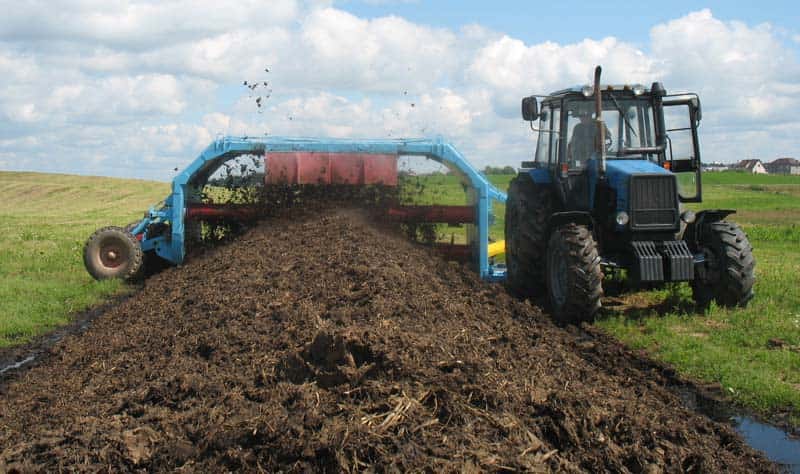
Pros and minuses of using straw as a fertilizer
Benefits:
- availability and low cost of materials used;
- smaller time and power costs of land with straw than, for example, by manure;
- the process of fertilizer is thus simpler, clean, pleasant and safe, rather than manure or chemical materials and substances;
- the minimum loss of useful substances from the material used when it is submitted, which is ensured due to the low rate of its decomposition;
- with proper introduction to the land with the durations and use of additional stomach elements, almost 3 times is superior to the dung alignment; Due to this: the moisture permeability of the Earth and the moisture ability increases, increase physical characteristics lands (looseness);
- after the work carried out, the Earth is preparing for landing planned crops in accordance with existing technologies;
- straw improves not only the biological activity of the Earth, but also enzymatic; When decomposing it in the soil, it enriches the land by carbon, which stimulates not only the enhanced growth of the roasting system, but also the green mass of plants;
- it also performs a protective role, protecting land from erosion formations, splasal growths, drying.
Disadvantages:
- when making poor-quality straw grades in the soil, pests and pathogennes on it can penetrate;
- to achieve the expected effect in terms of increasing the fertility of the Earth, it is necessary to additionally use mineral nitrogen, as well as a straw various varieties gravestone, legumes, rice;
- the need for repeated plowing to accelerate the straw decomposition;
- the need to moisturize the Earth in the event of a dry season, since without a sufficient amount of water, the decomposition of the material used will occur extremely slowly.
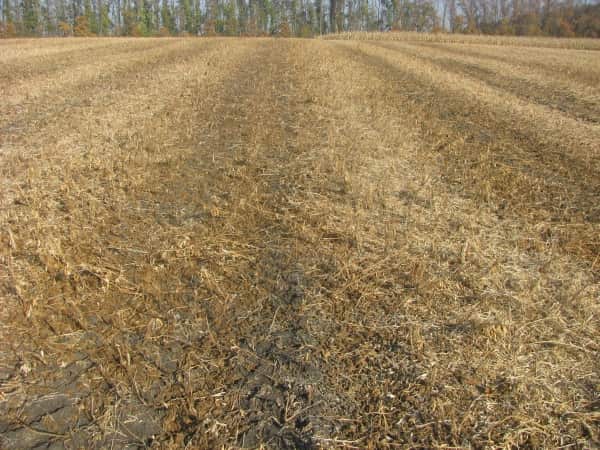
In order to achieve maximum effect From the enrichment of soil straw, it is necessary to use it in moderation and accurately perform the established sequence for making straw and mineral nitrogen.
The use of straw as fertilizer will be relevant at any time, and further study and analysis of its influence on soil cover in the aggregate additional elements and substances will have promising consequences.
And a little about the secrets of the author
Have you ever experienced unbearable joint pains? And you do not care what you know what:
- the inability to move easily and comfortably;
- discomfort with rages and descents on the stairs;
- unpleasant crunch, clicks are not on your own accord;
- pain during or after exercise;
- inflammation in the field of joints and swelling;
- caught and sometimes unbearable new joint pains ...
And now answer the question: does it suit you? Does such pain be tolerated? And how much money did you "merge" for ineffective treatment? Right - it's time to finish with this! Agree? That is why we decided to publish an exclusive interview with Oleg Gazmanov, in which he revealed the secrets of getting rid of pain in the joints, arthritis and arthrosis.
ATTENTION, only today!
Today, straw as fertilizer for the garden is used by many farmers.
Let's figure out what straw is and why is it used as so common?
Description and composition
Straw is dried stems without leaves and colors. It is divided into subspecies depending on which the straw is obtained. We will not consider all types, but let's stop on wheat, barley, oatmeal and pea.
Wheat
Wheat refers to the family of cereals and is one of essential Plantsused for baking bread in many countries of the world. IN chemical composition Wheat straw includes elements such as magnesium, iron, zinc, sodium, manganese, cobalt, as well as vitamin D and carotene. 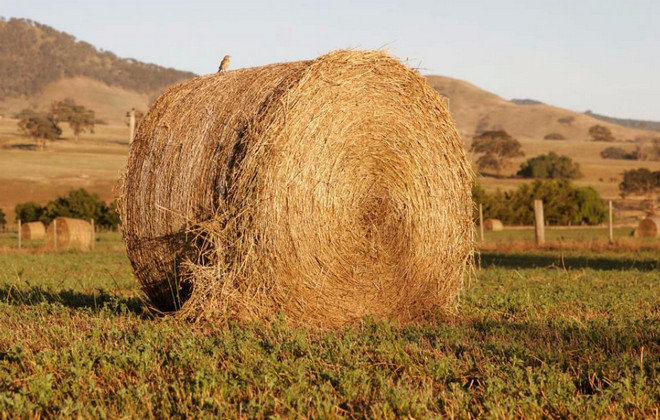 Also, the wheat includes Vitamins B1-B4, B6 and B9.
Also, the wheat includes Vitamins B1-B4, B6 and B9.
Barley
Dry barley stems are rich in calcium, fiber, phosphorus, magnesium, iodine, iron and sodium. In addition, they have protein, lysine and biologically extracts.
Did you know? Vitamins and minerals in barley are better absorbed than in a chemical analogue.
In barley contain more quantity squirrel. Barry culture is rich in such vitamins as D, A PP and E. 
Oatmeal
Oats is grown in many countries of the world both for and to power the person. Oat drying stems contain many crop substances such as protein, iron, cobalt, potassium, carotene and much more.
All these substances help to receive plants required amount Minerals that are so necessary to shoot a good harvest. 
Pea
Therefore, it is better to use this dried grass to enrich the earth along with nitrogen fertilizers. The proportion is as follows: 10-12 kg per 1 ton straw. To make this mixture even faster, it is better to add to it.  At the same time, the activity of microorganisms increases, which means that the decomposition process will begin to leak even more intense.
At the same time, the activity of microorganisms increases, which means that the decomposition process will begin to leak even more intense.
On plants
Dry grass decomposition badly affects root system Plants, since the ant, benzene, dairy, acetic, and other acids, which prevent the development of roots in plants in the Earth.
However, when nitrogen added to it, the negative impact on the plants is eliminated. Due to the large amount of mineral substances, dry grass decomposes faster, as they are necessary both microorganisms and higher plants.
Use of straw in pure form
Dry herbs feed cattle. Due to the fact that this product is malfunction, it is given as feeding. For better absorption, dry herbs are crushed, handled chemicals (Lime, ammonia and so on) or weave.
Straw granulation is also used with artificially dried grass.
Use dry plants stems and for bedding.
They are also good for cooking mats and plates.  In many museums of our country, the straw is used to cover the roofs (an open-air museum in Kiev "Pirogovo").
In many museums of our country, the straw is used to cover the roofs (an open-air museum in Kiev "Pirogovo").
Another use of dry stems of cellars and bob plants - biofuel. Also, they are compressed into fuel granules.
Sometimes straw is used to prepare paper (for example, banana). From it makes baskets and grids.
In the construction of the straw is used to create straw blocks.
In addition, many fashionable people like to wear straw hats. Also made of straw make souvenirs. 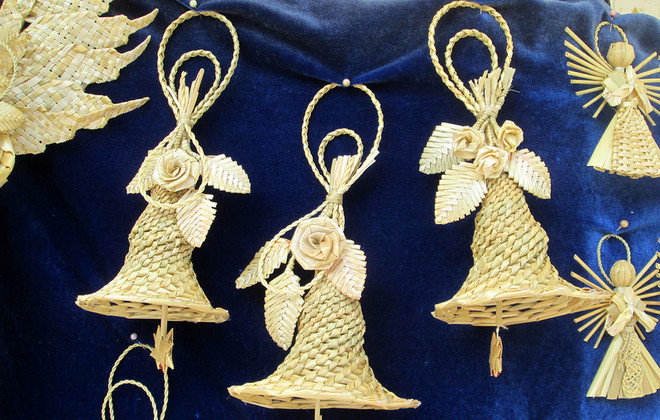 The use of straw is multifaceted, but we will focus on its use in the agricultural industry, that is, the creation of fertilizer from it.
The use of straw is multifaceted, but we will focus on its use in the agricultural industry, that is, the creation of fertilizer from it.
Cooking straw fertilizers
The use of straw as and fertilizer is widely used. Mulching means literally "soil shelter". This is done so that the earth does not overheat, and moisture remained on it.
Important!One of the main qualular qualularities of the straw is the protection of plants from insects and diseases.
In addition, mulching reduces or even blocks the growth of weeds. Also, the mulch fertilizer increases the amount of organic substances in the soil. The soil structure is improved, the land becomes loose and soft.
Under the influence of the sun and the rain, the land loses a large amount of useful substances, and mulching prevents it. 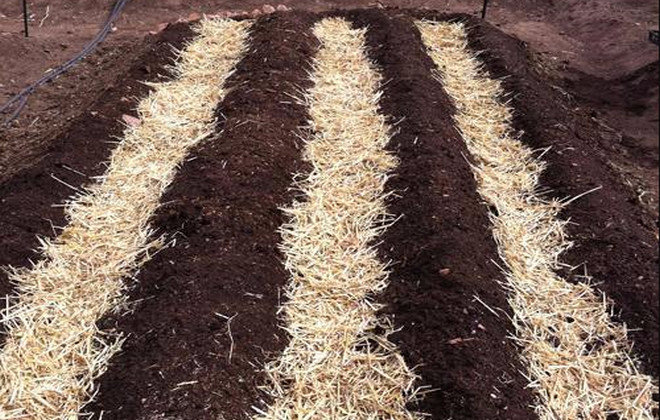 There is also such a method: the use of dry grass as a fertilizer.
There is also such a method: the use of dry grass as a fertilizer.
Before placing the dried stems of legumes and cereals to the ground, they must be thoroughly crushed. The desired length of crushed dried plants should not exceed 10 cm (75%) and 15 cm (no more than 5%).
Before making dry stems of cereals and legumes, nitrogen contributes. It is brought in the form of green fertilizer or at the rate of 1 c per 1 hectare. After that, the dried grass is evenly spread.It must be remembered that the height of the cut should not exceed 20 cm. Layout dry stems 12 cm deep into the depth. After some time you need to deepen the dried grass into the ground, but you can not immediately do it, as it overloads quite slowly.  That is why it is necessary for some time to hold the dried herbs shamelessly buried in the soil.
That is why it is necessary for some time to hold the dried herbs shamelessly buried in the soil.
You can get good crop results when combining dry plants and sowing. After sowing dry grass, sowers sow. It gives the soil additional source organic substances.
In addition, this fertilizer mineralizes dry stems of cereal and legume crops, which will also affect the quality of the harvest.
Important! The use of green mass and straw will benefitly affect the yield of winter crops.
Pros and cons
And yet, let's figure it out: straw on the garden benefits or harm? 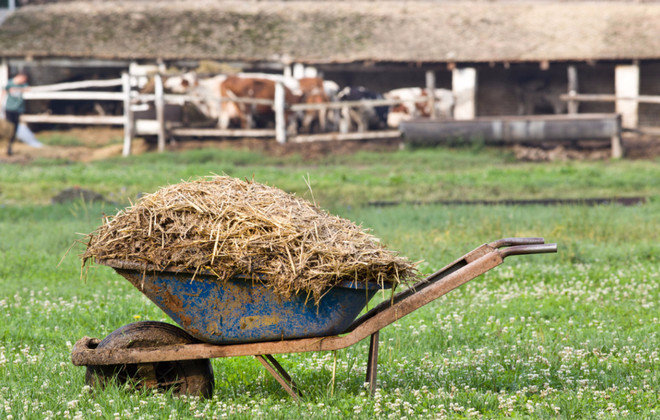
The benefits include:
- Availability - the dried grass itself does not represent interest in the agribusiness, therefore not used, however, as fertilizer is simply indispensable.
- This fertilizer is more pleasant to use than manure.
- The cost of fewer strength and time compared to other fertilizers (for example, manure).
- Easy storage.
- A large number of organic substances.
- Increase the looseness of the Earth.
- Improved soil moisture permeability.
- Pashnya holds water better, and with her useful material.
- Dry grass contains vitamins, physiologically active substances and amino acids.
- Saturation by carbon of this fertilizer helps to additionally "breathe" the earth.
- Decomposing, dry stems make additional carbon, due to which green plants grow.
- The protection of the earth from the sun.
- When using several types of straw increases the number of trace elements, which contributes full recovery Pashnya.
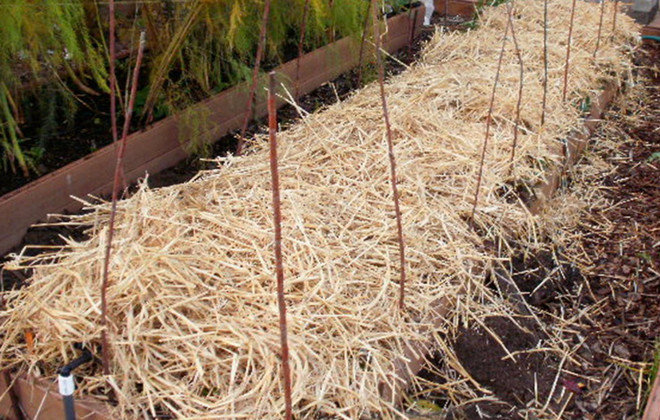
Negative aspects of using this fertilizer:
- Insects may fall into fertilizer, which negatively affect the development and crevital shoot.
- Separating, dry stems of cereal and legumes turn into harmful to the development of hydrochive acids.
- In dry grass contains a lot organic compoundsFor the decomposition of which you need a large amount of water.
- The dried stems of cereals decompose slowly and because of this, the beneficial substances will fall to plants for 3-5 years.
Did you know? According to the content of the organic straw exceeds the manure 3-4 times.
To prevent the negative effect of making dried grass, it is necessary:- Make this fertilizer every year.
- Make dry stems of cereal plants immediately after harvesting.
- After making cereal fertilizers, it is best to plant bean or disappeared crops.
- Always know the measure of making dry grass.
- Grind the dried plants stems and evenly distribute arable land, so it will turn faster and give more benefit.
- Move along with the dried stems of nitrogen herbs and chernozem, so the straw decomposition rate will increase by 30%.
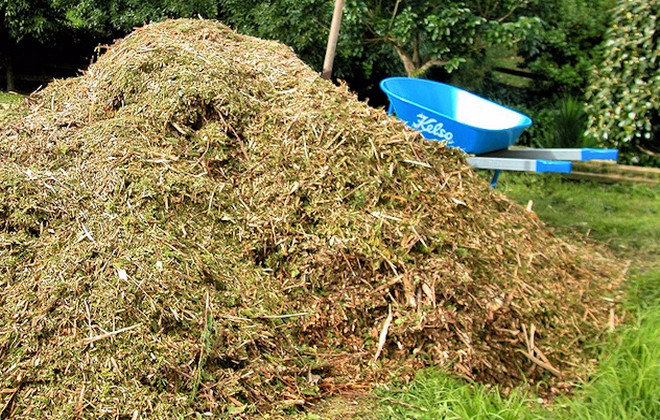 Whatever it was, but straw is a natural organic fertilizer For arable land, which will make your crop rich, and the soil fertile for many years.
Whatever it was, but straw is a natural organic fertilizer For arable land, which will make your crop rich, and the soil fertile for many years. Was this article useful?
Well no
Straw remaining on the fields after harvesting grains is an excellent assistant on our gardening areas. The area of \u200b\u200bits use is almost unlimited: it is an excellent fertilizer, and the replacement of the soil, and the means for mulching the soil. How to use Solla in the country We will look at this article.
The first method of use is mulching. What gives us mulching and why should it be done?
Mulching is superficial soil with mulching materials (straw, dry grass, leaves, and so on). For proper holding This operation, the land becomes loose, lightweight, less dries in the summer.
What are the pros and cons of mulching straw?
Let's start with the advantages: dense crust is not formed under the layer of mulching material on the soil, watering plants is required less often, since the straw prevents the evaporation of moisture from the surface, through a layer of mulch, equal to 5 cm, annolete weeds It is not pierced, that is, the leveling of the site is significantly reduced, the soil does not require loosening, during watering, water splashing does not occur, which eliminates its falling on the leaves and fruits, also mulch retains the root system of plants from overheating and frosts.
The only minus is the type of mulching reduces the amount of nitrogen in the soil, the plants will not have enough of this substance for full development and nitrogenous fasting can begin. In order to avoid this, it is enough to make the soil feeding with nitrogen fertilizers.
Optimal time for mulching straw - spring. The peculiarity of the straw is that it takes quite a long time to overload, so it is better to use it for mulching those plants that can be planted into cool soil. For example, potatoes, strawberries, cabbage, onions and so on. Cucumbers to mulch straw needed after the soil warms up enough.
How to conduct mulching? I scatter a straw smooth layer, about 15 centimeters thick, in the places we need, around bushes and plants. Why is such a thick layer? The straw itself is volumetric and after a couple of days, when it is losing, there will be no more than 4-5 centimeters layer.
Growing potatoes in straw
Recently, this method is becoming more and more common. Why? First, grow potatoes in this way. Secondly, the crop potatoes will definitely be good. Thirdly, the potato will not need to water, while its roots will be constantly in comfortable conditions for them. Fourth, you can forget about weeds and colorado beetleSince the layers of straw weeds are difficult to break through, both different weeds, and in the soil insect.
How to plant potatoes under the straw? A pre-prepared bed (more precisely, a predetermined place, since the place where the potatoes do not require loosening, nor pumping) fall asleep the peat layer. The layer thickness should be 15-20 centimeters. After that, on the "soil" lay out seed potatoes as we like: rows, in a checker, diagonally ... and we fall asleep all this with a thick layer of straw. After that, the straw is neatly conclusted, sleep still fresh straw and so until the solar layer of straw reaches thickness of 25-30 centimeters.
All, potatoes are planted. It remains only to watch the garden, expecting first shoots, then the crop. If the summer is dry, then the garden will have to be 1-2 times per season.
In August-September, when it comes to collect a harvest, you need to carefully remove the mulching layer and collect potatoes. The crop grown in this way is usually quite abundant, all tubers are smooth, smooth, beautiful.
Straw along with others vegetable residues is one of the main sources of soil replenishment organic. By the content of organications, one ton of straw is equivalent to 3.5 - 4 tons of manure!
What is the value of straw? What are its properties? How can you quickly increase soil fertility? How to use a straw in natural agriculture competently? Its role and application in natural agriculture!
Today we will analyze all these and other issues related to straw! Do not miss - all the most interesting things that you have to learn about straw! ...

For many regions of Russia, this phenomenon is considered normal. You can often observe such a picture when the straw rolls or skirds are burned on the fields! And this is a catastrophe!
That Catastrophic harm both soil and its inhabitants! Sorry instantly, straw creates temperature on the surface of the soil to 360 0 C, and at a depth of 5-8 cm This temperature reaches 50-70 0 FROM!
Gumus, which accumulates decades, disappears with such fires in the fields in one moment!Studies have shown that on a leached chernozem The burnout of humus occurs at a depth of 5 cm and burns it 1.2 tons per 1 hectare!
And the loss of water in the soil when burning straw occurs at a depth of up to 10 cm, and it is naturally worsens its water chemical composition and its biological activity is reduced!
So why are hundreds of tons of straw in the fields annually burned? ... What do the agrarians think? ...
What did I get this conversation? For me, it is a huge problem to get a straw! Well, we were planted with all the state farms and all the collective farms were surrounded ... Well, we don't grow wheat, neither rye ... Fields are not seeded for 10 years, but even more ... and there is no place to be ordered ... but you have to order from afar, for huge money!
But once driving through our regional surroundings, I saw the field, and on it bales straw! This in principle is not very far away from us, and I gladly went to seek who owns this field! It was not necessary to look for a long time ..., I can talk to the good ... but the day was a day off ... There were no guides on the spot ...
I had to take the husband to take out of the week to go back to rich straw places! And what do you think I see literally after 4 days? All the straw burned !!! .... I was shocked simply ... my disturbance was not the limit! And I still got to the people you need! And managed to agree on the supply of straw in the future!
In general, things are so much that unnecessary non-used straw is forced to burn ... is it easier to distribute it to the people! I think it is unlikely to unlikely to someone if it worked on earth?! BUT? Would you refuse?
Therefore, if you know where it is burned in your surroundings - go and take it! They do not need - we need !!!
Straw in natural agriculture!

Straw every day takes all significant positions on our gods. It is widely used by gardeners and this is not by chance.

Almost every tenth gardener has already tried to grow - And none responded badly about this method!


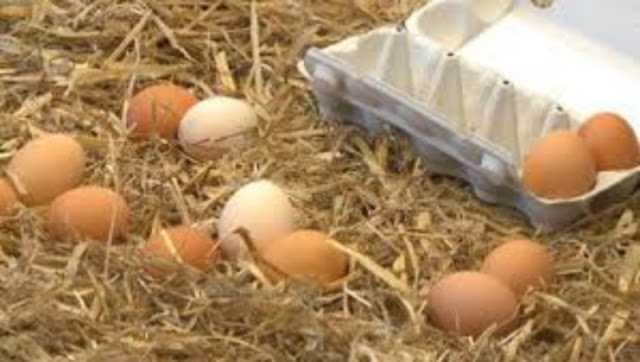
Why is the straw so popular in environmental considerations? What is its advantages and what properties of straw so have it for use? The main role of straw in agriculture, in the main thing is the fertilizer of the soil! Because straw plays a great ecological role!
Grinding straw is used more effectively. The annual application of straw as a mulch and later entering it into the soil and there is a decomposition:
- Increases soil fertility and reduces its compacution!
- The soil becomes more loose,
- Its moisture intensity increases
- Increases nutrient content in it,
- The soil is protected from wind and water erosion,
- And in the spring faster breathes, which makes it possible to start gardening earlier!
- Promotes the development of soil fauna - increases the activity of bacteria, rainworms and other organisms!
- Improved agrochemical I. physical properties Soil!
But the straw is effective not only as a mulch! No less efficient - build from it straw ridges! And about how to do it right next to go!
Is it worth doing straw beds and what can be grown on them?
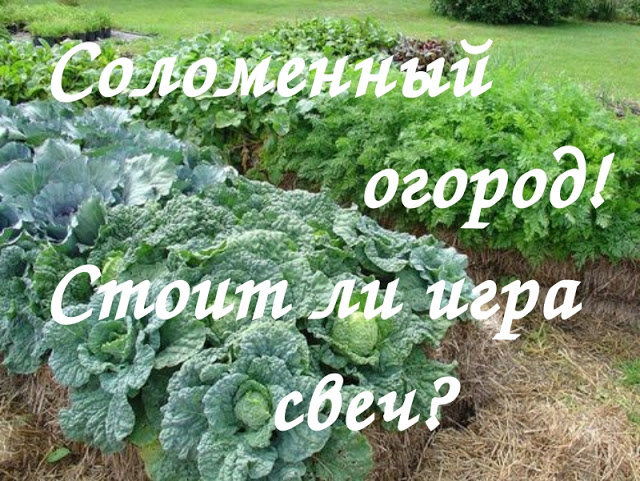
To start, let's understand whether it is worth doing straw beds and what can you grow on them?
And the straw is no exception, I gradually started to put it in my landing, spent a lot of different experiments with her, put it under it, and on her, and with her, and her too! Well, when I realized that straw - this cool thing, and it's difficult to get it, we started growing it yourself, the benefit of our site there are two abandoned, with one we are sick grass, and on the second began to sow wheat, barley and rye !
for five years, I tried a straw in different ways and now I can confidently say that it can be grown by anything! Not only the magnificent potato under the straw is growing, but everything grows on straw!

What do I like straw ridges and who I definitely recommend trying them?
I really like the straw ridges by building them can be easily on any soil, even on the scorched land! Do not dig to dig, nothing, loose, not need to fall! But for the year of its existence, such a bed can make any soil under fertile !!!
And now I will tell about all the stages of the device of the straw ridge!
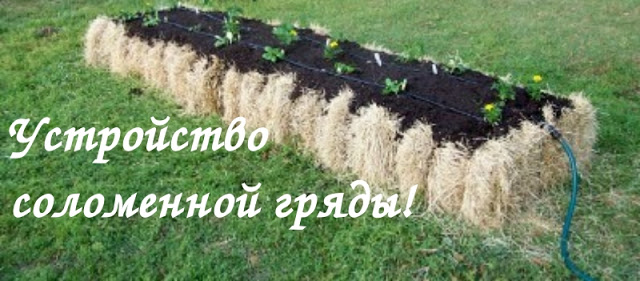
It will take no more than 10 days to create a straw ridge! But first it is necessary to purchase straw bales. When buying, inspect them, so that there are no mold and they should not be stuck, i.e. We need fresh bales - not last year!

Decide with the place, such a ridge can be arranged anywhere in the garden, even on a non-processed area, on the problem itself! To begin with, start with a smaller, that is, build a small bed of several bales, try it and then you can plan more and more.

Here you can give a flight of fantasy, creating any geometric shapes of the ridge at least in the height, at least in shape! In any case, the garden will get high, which can be useful for people with back problems! You do not have to bend, all landing almost at the level of the belt is very convenient!
Many gardeners are afraid to use straw for one simple reason that rodents can settle in it! I will tell you right - rodents may be present in the presence of straw and in its absence. These are such animals that are not so much, but you can progress.
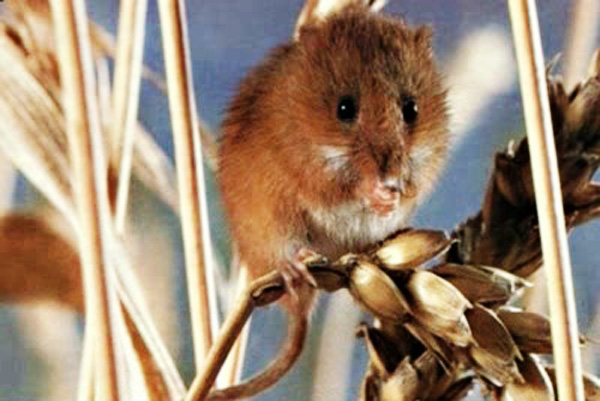
The mice do not like the ash tree, with the licking of the paws - the ash enters the stomach of rodents and annoys it. Therefore, they avoid harsh places. Therefore, you can take care of the ridge before booking. At the place, selected and marked under the straw garden, we settle the newspaper or cardboard, and the ascend on it is scattered from the amount of a bucket of 5 sq m, pure wood ash!
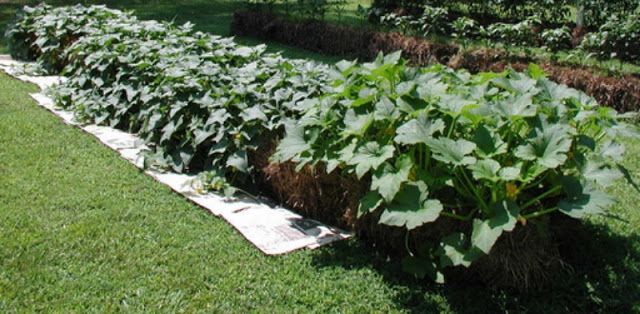
You can lean the box wooden under such a bed, and it is possible without it. We put bales tightly to each other and wind them firmly with twine. This in order not to be formed gaps between bales.
Now you need to pour a bed carefully for three days, it is necessary that the straw soak moisture. And within 4-5-6-7 days, we water water with microorganisms! Baikal or any other EM drug is suitable, but you can pour a good herbal infusion prepared in advance! Now inside bales begin to occur active microbiological processes and straw begins to warm up from the inside! We continue to water the next three days, you can simply be water, but you can weak compost tea.
All 10 days are seeded with a film, but not tight, and so that the air can freely circulate, it should be ventilated. For these 10 days, the process of straw decomposition is launched, which will last until the end of the season, but the first 10 days is very active, so planting something starting these 10 days later.
The straw bale perfectly accumulates moisture in itself, therefore microorganisms begin to actively work, because at the same time the straw breathes freely, ensuring the oxygen in the activity of microorganisms. Bacteria begin to actively multiply and occasionally stand out when their livelihoods carbon dioxide - The main factor for the development of any plant! This is the uniqueness and efficacy of straw ridges!
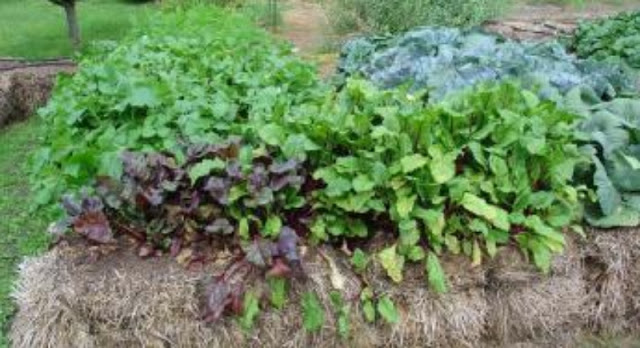
During the time, while the garden is preparing, think about whether some kind of plants are needed, what are you going to land here? I recommend to start trying on low and medium-high plants, such as peppers, tomatoes, not high only, cucumbers, zucchini, pumpkins.
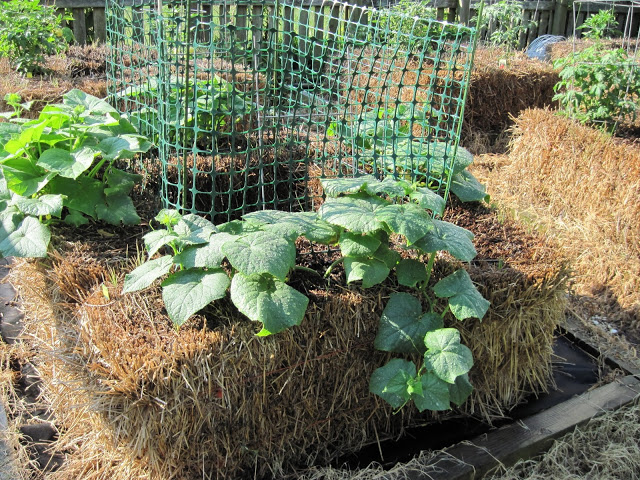
If you plan to plant a variety of more meters high, then immediately install the sleeper or another support. Because straw when decaying by the end of the summer becomes loose and it will not be able to keep huge plants, they are sick.
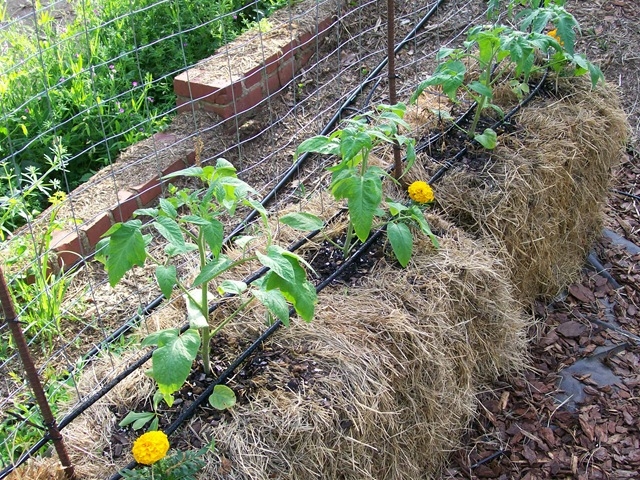
So, are you already starting to understand what the chip is here? In the fact that while you are cooking in the landings the main garden - cook the beds, sew the Siderats ... This gardening is only 10 days and is ready to accommodate any plants!

Accordingly, the crop will be before! And if you consider that the straw beds can be installed with the same success and in the greenhouse ....? !! Imagine how easier your work facilitate, compared, for example, with warm beds!
And if we put a warm bed on the sides of the straw bales?! No ... No ... You first try a tiny straw bed, and then you will not stop you, you will begin to combine the beds! And it's great! The less work in the garden, the favorite it becomes !!!
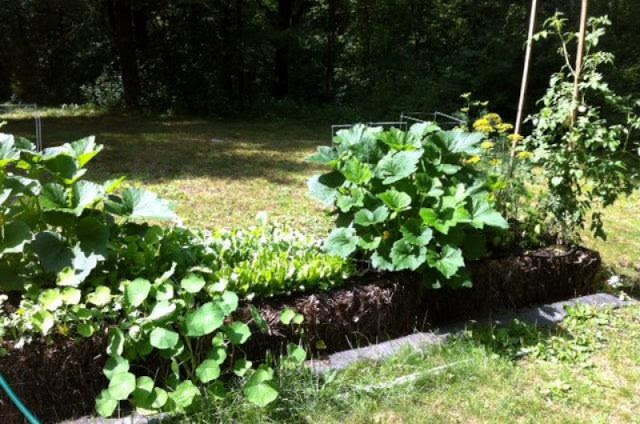
Let's go back to our beds straw, it is already ready, the supports are installed and now you have two options: you can sow something to the seeds on it, and you can fall out ready to seed out!
If we plan to plant seeds, then the surface of the ridge of the straw must be filled with a thin layer of soil (biohumus or compost).
If seedlings, then make the Lunka in the straw and the seedlings land strictly with a lore earth.
Landed if there is a threat of return freezers, then they are terrible only ground parts, because inside the straw the temperature is good, and the top of the plants can be protected in the usual way - we install arcs and stretch the underfloor material, also concerns the greenhouses. Make a greenhouse in a greenhouse!
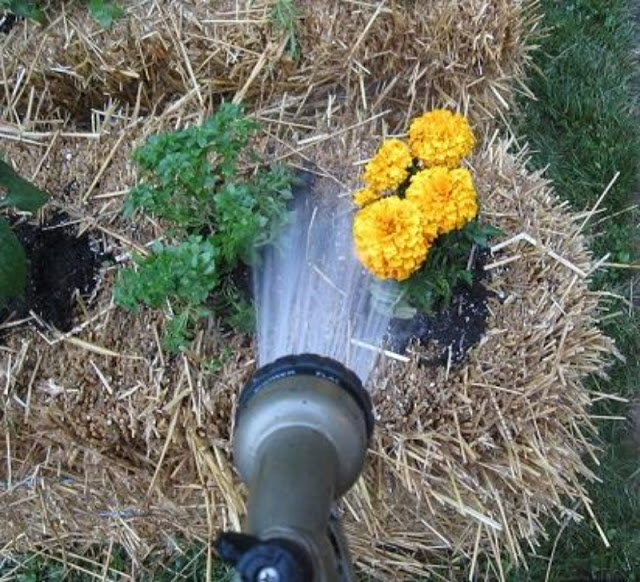
Next, all that is required of you is watering! And with this you can cope once and forever - setting drip irrigation, you can relax! If there is no such possibility, then we water the canoe! But we water the straw, not in foliage! It is very important that the plants do not get sick!
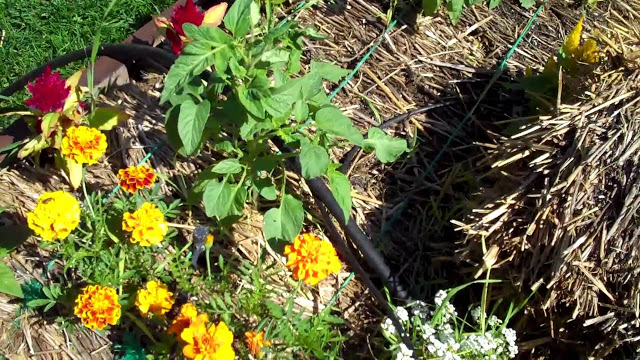
By the way! I forgot to notice that it is necessary to hide the HB 101 before boarding the straw garden, although it is possible to scatter the granules on the surface of the garden. About sores, either not scary, then the plant is strong and healthy, do not water, form in the foliage, form in time, apply on the straw bed too! And no diseases will arise!
The most interesting thing is what to do with this bed in the fall? Yes, no, leave her so stand until Spring - this straw worked, overwhelming will go to the mulch, it is possible to disassemble it in principle and in the fall and hide her garden. But then the main thing is that waste-free production! Straw will still serve as your garden, which will be transformed year after year! Literally for several years of straw application in this way, you will not recognize your soil - it will become truly healthy and alive! Check!
And if you decide the autumn spent straw lay down or, then removing it from this place you will be pleasantly surprised! Under this straw Grocery, you will see the most healthy and living point, which is kishaned, who have worked on your harvest all these months, they worked on creating fertile soil! Now at this place you can grow even the most demanding vegetables! By the way, in the straw beds, you can successfully grow and a variety of, whimsical, including flowers!

And in conclusion, I want to add ... no need to be afraid of mice! Place around the perimeter of the site several bushes of Chernelin and you will not see the trace of rodents. They will bypass your part side (only with the neighbors agree on solidarity), but Chernelin gives seeds only for the second year. Namely, his seeds are so hateful to rodents, although the smell scares them, the benefit that we do not feel it!
Live in Ladu with nature and with yourself! Decorate the ground paradise corners His gardens and gardens, love the land-mother, work on it wisely and consciously! Enjoy every minute spent on your land!


